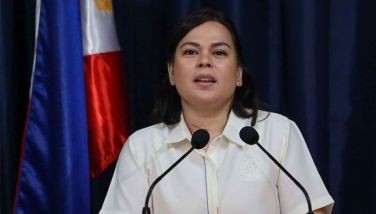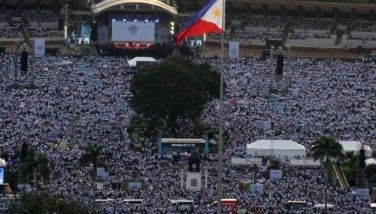Philippines continues to show growth potential
The ASEAN+3 Macroeconomic Research Office (AMRO), during its recent annual consultation visit to the Philippines from Aug. 27 to Sept. 6, noted that the Philippine economy continued to grow steadily at six percent in the first half of this year, driven by strong domestic demand and export recovery.
It observed that the labor market remained strong which helped boost domestic consumption. Inflation, it said, continued its declining trend from 2023, reflecting a moderation in international commodity prices, the government’s inflation-containing measures, as well as tight monetary policy.
It agreed that the current policy mix is appropriate, but can be adjusted further to support economic growth while rebuilding policy buffers.
The preliminary assessment was made by an AMRO team led by principal economist Runchana Pongsaparn. AMRO director Kouqing Li and chief economist Hoe Ee Khor participated in the policy meetings. They also met with Philippine Finance Undersecretary Joven Balbosa and Bangko Sentral ng Pilipinas deputy governor Francisco Dakila, Jr. The discussions focused on the risks and challenges facing the Philippines, and policy options to sustain the growth momentum, anchor inflation expectations, restore the fiscal buffer and address long-term structural issues.
According to team leader Dr. Pongsaparn, “The Philippine economy is expected to grow by 6.1 percent in 2024 and 6.3 percent in 2025, driven by higher government spending, as well as an upturn in external demand and strengthening domestic demand. Private consumption is anticipated to grow faster for the rest of the year, supported by strong labor market conditions, lower inflation and robust overseas remittances. With the start of the monetary policy easing cycle, we expect private investment sentiments to improve.”
Headline Consumer Price Index inflation is projected to decline to 3.3 percent in 2024 from six percent in 2023, and ease further to 3.1 percent in 2025. While upside risks such as wage increases and local food supply shocks remain, the slowdown of headline inflation is expected to continue in the second half of 2024 due to lower international prices of fuel and food and tariff cuts on imported rice.
On the external front, AMRO said that the current account deficits have narrowed, and net direct investment inflows increased, while external debt remained low. The Philippine banking system has stayed resilient, with ample liquidity, robust profitability and high capital buffers. The fiscal position has continued to improve in 2024, supported by a significant increase in revenue despite higher fiscal expenditure.
Risk and vulnerabilities
In the near term, however, the AMRO team warned that the growth prospects of the Philippines could be subject to several risks. Higher inflation, especially from food prices, could dampen consumption. At the same time, the economy could be challenged by a potentially sharp slowdown in major trading partners, such as the US, Europe and China.
Heightened geopolitical risks could increase the likelihood of global supply disruptions and further global economic fragmentation.
The country’s long-term potential growth could be constrained by insufficient infrastructure investment, vulnerabilities to climate change and the prolonged scarring effects caused by the COVID-19 pandemic.
Policy recommendations
According to the AMRO team, the current fiscal-monetary policy mix is appropriate. As inflation continued to ease but remained elevated, the Philippine Monetary Board maintained the policy rate at 6.5 percent in the first half of 2024 and delivered the first rate cut only in August with indication that inflation will continue to ease within the target band.
The AMRO team believes there is room to adopt a less restrictive monetary policy stance if current macroeconomic trends continue. However, if supply-side risks emerge, the whole-of-government approach should be taken to address inflationary pressures.
The fiscal stance in 2024 and in 2025, the AMRO team said, are expected to be neutral with a continued improvement in the fiscal deficit. The government is likely to continue its medium-term fiscal consolidation plan at a slower pace to better support economic growth. However, it will be prudent to accelerate the pace of fiscal consolidation if conditions allow.
In the medium term, the AMRO team added, restoring fiscal space remains critical to build greater resilience to external shocks amid elevated uncertainty. With regard to the financial system, the team recommends that Philippine authorities should consider a more active use of macro prudential toolkits, strengthen the institutional framework to safeguard financial stability and deepen the bond and repo markets.
On structural issues, the government should implement measures on labor upskilling and reskilling to raise labor productivity. More efforts should be made to attract foreign direct investments and to encourage technology transfer.
Furthermore, a comprehensive strategy for enhancing the country’s competitiveness, including raising infrastructure investment, continuing digitalization and developing a sustainable economy, is crucial to bolster the Philippines’ economic growth potential, the team concluded.
- Latest
- Trending





























